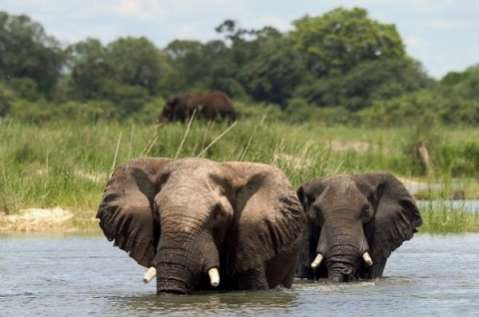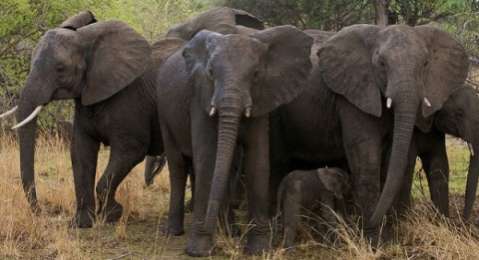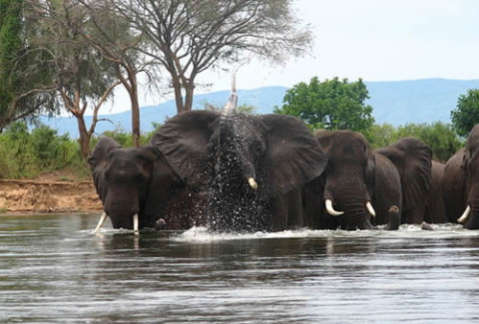
It takes a global investigation — from the gleaming ivory markets of China to a $12 million pile of tusks and trinkets in Denver to the smugglers’ shops of West Africa -– to understand the grim laws of supply and demand in the world’s illegal ivory trade.
The billion-dollar food chain begins deep in the forests of Africa, where elephants are now disappearing faster than ever. ABC News’ “Nightline” acquired footage of a poacher who claims 499 elephant kills. For his 500th, he doesn’t have enough bullets to put the mighty beast down quickly. The elephant suffers for hours before the poacher can carve off just enough meat for the journey home and two modest tusks worth tens of thousands of dollars.
There were 30,000 elephant kills like this last year alone. To this beloved creature, the tusk is a key to survival in the wild, where it must forage and fight. But they are worthless against a man with a gun, who can sell that “white gold” on the black market for $1,300 a pound.
Organized crime syndicates work across Africa, where corruption is rampant and police seem to look the other way. But not if Ofir Drori has anything to say about it.
Drori is a self-made wildlife crime fighter and the founder of the organization LAGA, which says its work has led to the arrests of 900 people who trade in everything from birds to apes to big cats. But Drori’s top priority these days is the elephant, and those who profit off its destruction. With a team of amateur detectives, he uses hidden cameras and microphones to build cases against poachers across Africa.
“Fighting corruption should be the first thing that we do,” said Drori. “No matter where it takes us. It’s going to be tough. It’s going to be a war. But that’s what we need to do.”
And once he has gathered enough evidence, he then begs and cajoles, goads and guilts local police into enforcing laws.
Meanwhile, on the other side of the globe, Asian cultures have long craved ivory as a sign of good taste that can bring good luck. Many call it “elephant teeth,” wrongly assuming the tusks fall off and grow back. Tangible proof of the illegal trade was recently found hidden in a shipping container of mahogany wood en route to China and seized in Malaysia: six tons of ivory, the $12 million remains of more than 700 elephants.
“If it’s not stopped very soon, we’re not going to have any more wild elephants in Africa,” said Dan Stiles, an expert on ivory markets around the world.
 Besides China, one of those markets is the United States. Last year, two jewelers in New York City, the center of America’s ivory trade, were caught with more than a ton of illegal ivory. There was a similar-size bust in Philadelphia, and a Fish and Wildlife repository in Denver holds 6 tons. All of it will soon be burned to send a message.
Besides China, one of those markets is the United States. Last year, two jewelers in New York City, the center of America’s ivory trade, were caught with more than a ton of illegal ivory. There was a similar-size bust in Philadelphia, and a Fish and Wildlife repository in Denver holds 6 tons. All of it will soon be burned to send a message.

 JOIN DRIVERN TAXI AS PARTNER DRIVER TODAY!
JOIN DRIVERN TAXI AS PARTNER DRIVER TODAY!












Lunch is a slice of toast or 5 crackers with 3oz tuna or cottage cheese or
the afore-mentioned don’t-strike-a-match hardboiled egg. e) Time limits for questions are difficult to enforce, so give half a minute or so
depending on the question. I was the second Konan tour coach that passed me in as many days.
how much does an elephat tusk cost per kilo and how much is a well blended leopard skin on a zambian black market